Weekly highlight ...bet today at the local.
Pats Fins Under 44
Giants Denver... Under 42.5
Seattle-3
Rams-7.5
4-0


| Read in Browser | |||||||||||||||||||||||||

| � | |||||||||||||||||||||||||

| � | |||||||||||||||||||||||||
| � |
Weekly highlight ...bet today at the local.
Pats Fins Under 44
Giants Denver... Under 42.5
Seattle-3
Rams-7.5


| Read in Browser | |||||||||||||||||||||||||

| � | |||||||||||||||||||||||||

| � | |||||||||||||||||||||||||
| � |
The only thing I saw there was 4-0 NFL.
Well done.

September 13, 2021 Continue reading the main story |
| Good morning. (Was this newsletter forwarded to you? Sign up here.) |
|
| [h=2]A decision that split in Big Tech’s favor[/h] |
| A federal judge’s split decision on Friday in the high-profile case between Apple and Epic Games, which stopped short of declaring Apple a monopoly but said it was anticompetitive, allowed parties on both sides of the argument to claim victory. The ruling also set off celebrations among developers who said the ruling would allow them to avoid Apple’s 30 percent commission on in-app purchases. Spotify, one of those developers, said it was pleased with the ruling. |
| Conversely, so did Apple. That suggests that much of the coverage over the weekend about the ruling representing a meaningful setback to the tech giant, whose shares fell on the news, should be taken with a grain of salt. It’s also telling that Epic filed an appeal against the decision yesterday. |
| A quick recap: Epic sued Apple in August last year, after the iPhone maker removed Epic’s popular game Fortnite from its app store. Apple said the developer had broken its rules by steering players to make purchases outside of Apple’s app store, circumventing Apple’s ability to collect a commission on in-app purchases. Epic, in its suit, said Apple violated antitrust laws by forcing developers to use its payment system and forbidding them from telling app users about alternative ways to pay. |
| [h=3]PAID POST: A MESSAGE FROM DARKTRACE[/h]When Ransomware Strikes, Darktrace Fights Back Autonomous Response is the only technology that takes targeted action to interrupt ransomware, without disrupting business activity. Discover how to protect your organization from machine-speed attacks. LEARN HOW > |
| The judge sided with Apple on questions of monopoly. “While the Court finds that Apple enjoys considerable market share of over 55% and extraordinarily high profit margins, these factors alone do not show antitrust conduct,” Judge Yvonne Gonzalez Rogers wrote. “Success is not illegal.” But she said that Apple’s policy against steering, by forcing developers to withhold information from consumers, was anticompetitive under California state law, and therefore should not be allowed, not just within the state, but anywhere. |
| The main strike against Apple is open to interpretation. There is plenty of room for interpretation in the judge’s order on Apple’s steering rules, which said that Apple cannot prohibit developers from “including in their apps and their metadata buttons, external links, or other calls to action that direct customers to purchasing mechanisms, in addition to In-App Purchasing,” the judge’s decision said. |
| There is debate about the difference between buttons and links, which could make the effect of the ruling less significant than it seems. If a button, like a shopping cart icon or “pay now” call-out, isn’t the same as a link, then Apple could interpret the ruling as allowing things that look like buttons but don’t take users to external sites when they tap them. This might set up more fights between Apple and developers. |
| Legal experts said that the decision was not a road map for future antitrust litigation, but rather another dead end for those who want to rein in tech giants via the courts. It’s more evidence of “how narrow our federal antitrust laws are,” Eleanor Fox, an antitrust law scholar at N.Y.U., told DealBook. “Some people are saying it’s a big win for Epic, but that may not be so.” |
| Apple said that it needs to control the entire App Store ecosystem to ensure privacy and protect consumers from being ripped off, and the judge basically agreed. In fact, Judge Gonzalez Rogers argued that a world where Apple had no ability to protect its commissions would be unfair. “The ruling shows the gap between the popular perception of what is a monopoly and what the law says,” Fox said. And that, in turn, “gives those pushing to change the laws in Congress pretty good ammunition,” she said. |
| [h=3]HERE’S WHAT’S HAPPENING[/h] |
| Beijing reportedly wants to break up Alipay. As part of the Chinese government’s crackdown on domestic tech giants, The Financial Times reportsthat regulators may order the fintech company, which is part of Jack Ma’s Ant Group, to split off its lending business and turn over user data to a partly state-owned credit scoring joint venture. This follows recent rumblings that state-backed companies would take a stake in Ant Group. |
| The stock market looks to rebound from a rough week. Futures are up today, after five days of losses marked the longest consecutive stretch of down days since February. But a growing number of Wall Street strategists warn that more market drops could be ahead. |
| Democrats outline tax increases for the richest businesses and individuals. The plan circulating among House Democrats proposes to raise the corporate tax rate to 26.5 percent for companies that report more than $5 million in income, make the top marginal income tax rate for individuals 39.6 percent and hike the capital gains tax rate to 25 percent. The plan is less aggressive than President Biden had earlier proposed, with projected revenue falling short of fully funding the White House’s $3.5 billion spending plans. |
| Whirlpool is offering employees $1,000 to be vaccinated, DealBook has learned. The incentive, announced to employees last week, came as Biden ordered OSHA to require companies with more than 100 employees to require that workers be vaccinated or face weekly testing. This morning, the Consumer Brands Association, a trade group, wrote to Biden with a long list of questions its members have about the order, reflecting the confusion among companiesabout how to apply vaccine mandates. |
| Kansas City Southern is back together with Canadian Pacific. The railroad operator said yesterday that it deemed a $29 billion takeover offer from Canadian Pacific superior to a higher bid from Canadian National. Canadian National was the preferred suitor until its bid to create the first railroad to connect all of North America hit a regulatory snag, and if it loses out in the bidding war it will receive a $700 million breakup fee. |
| [h=2]A new type of advisory firm[/h] |
| As companies put more focus on diversity, political engagement and working with a broader range of stakeholders, their consulting needs have changed in turn. Advisers are adapting to meet this demand. Today, Jon Henes, a former restructuring partner at Kirkland & Ellis, is launching C Street Advisory to offer C.E.O.s and boardrooms advice on issues that span business, politics and social justice. |
| The firm blends Henes’s experience and relationships at Kirkland with his time as the national finance chair for Kamala Harris’s presidential campaign and a co-finance chair for Ray McGuire’s New York mayoral campaign. |
| C Street has four main functions: Corporate advisory, like the work Henes did at Kirkland; diversity, equity and inclusion (also known as D.E.I.); employee recruitment and retention; and communications. C Street will compete with advisory firms like Teneo, among others, that have turned their attention to helping clients navigate the complex social issues facing companies today. “It’s not about just checking boxes, it’s about really helping to build value in corporations,” Henes told DealBook. |
| The firm has already hired about 15 people. They include Beth Kojima, a director of special events for McGuire’s mayoral campaign; Melissa Prober, a former deputy general counsel at the Clinton Foundation; Al Tillery, a founding director for Center for the Study of Diversity and Democracy at Northwestern University; and Lisa Hernandez Gioia, who handled communications for Hudson Yards. Board members include Minyon Moore, who previously worked in the Clinton White House, and the prominent entertainment lawyer Matt Johnson. |
| [h=2]“We’ve been a little bit peacetime generals at a time where, actually, we’re in a war again.”[/h] |
| — Mark Malloch-Brown, president of the Open Society Foundations, which was started by the billionaire investor George Soros and is now the second-largest private charitable foundation in the U.S. The left-leaning foundation is undergoing a restructuring, which includes buyouts for more than 150 employees, as it focuses on fighting the rise in authoritarianism around the world. |
| [h=2]The week ahead[/h] |
| Price check: Tomorrow, investors will scour the August data for the Consumer Price Index for clues on whether higher inflation is temporary. Some of the recent rises were in categories where prices dropped as lockdown orders took effect last year, such as airline tickets, or for items like cars that have been affected by shortages. Another sign that inflation may be temporary? Prices have also popped in advanced economies around the world — despite vastly different policy approaches in response to the pandemic. |
| Poverty report: The Census Bureau will release its annual report on income and poverty in the U.S., also tomorrow. Poverty is expected to have risen only slightly last year, despite the huge increase in unemployment, signaling that government aid helped offset the economic impact of the pandemic. |
| New iPhones: Apple is set to unveil its latest line of smartphones at a virtual event tomorrow. (Tuesday is shaping up to be a busy day.) Camera upgrades, improvements in battery life, and other tweaks to iPhones, smart watches, laptops and other products are expected. |
|
| From the TimesMachine: On this day in 1956, I.B.M. unveiled four computers, which The Times called “think units,” designed to aid factories and offices with accounting and typing. One of the devices, the Ramac, cost $3,200 a month to rent. The electronics company’s president, Thomas J. Watson Jr., said the launch was the “greatest product day” in the history of I.B.M., and in the history of the office equipment industry as a whole. |
| Want to share The New York Times with your friends and family? Invite them to enjoy unlimited digital access to our journalism with this special offer. |
| [h=3]THE SPEED READ[/h] |
| Deals |
|
| Policy |
|
| Best of the rest |
|
| Anna Schaverien contributed reporting. |
| Thanks for reading! We’ll see you tomorrow. |
| We’d like your feedback. Please email thoughts and suggestions to dealbook@nytimes.com. |
|
|
|
|
|
|
| Andrew Ross Sorkin, Founder/Editor-at-Large, New York @andrewrsorkin |
| Jason Karaian, Editor, London @jkaraian |
| Sarah Kessler, Deputy Editor, Chicago @sarahfkessler |
| Stephen Gandel, News Editor, New York @stephengandel |
| Michael J. de la Merced, Reporter, London @m_delamerced |
| Lauren Hirsch, Reporter, New York @LaurenSHirsch |
| Ephrat Livni, Reporter, Washington D.C. @el72champs |
| Read in Browser | |||||||||||||||

| |||||||||||||||
|



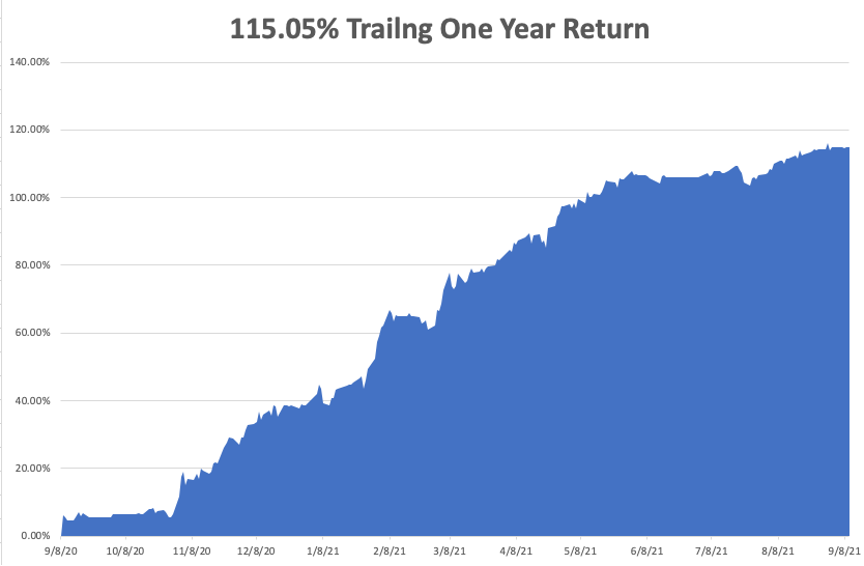
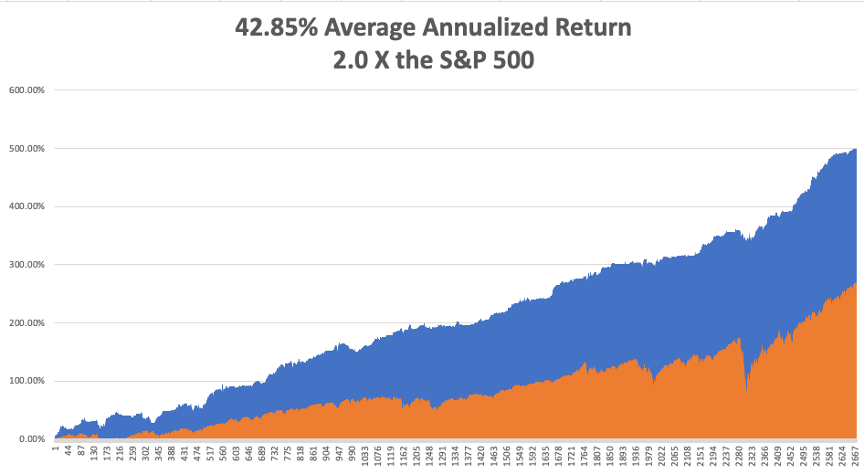

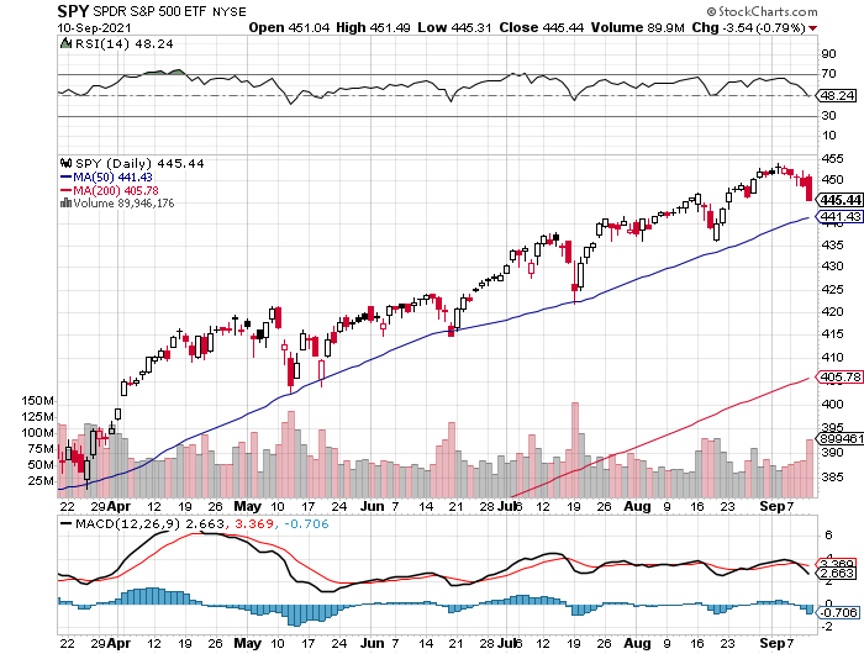
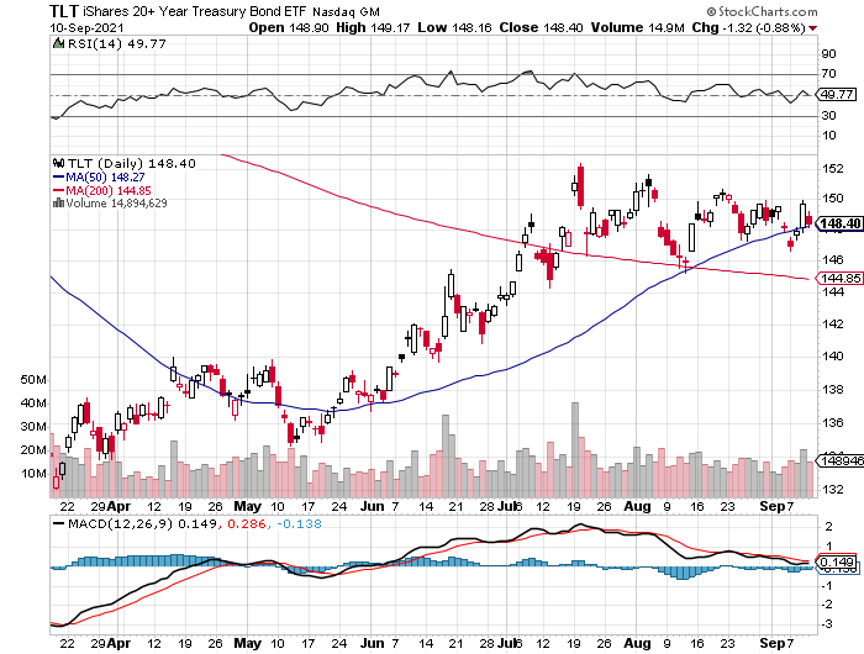
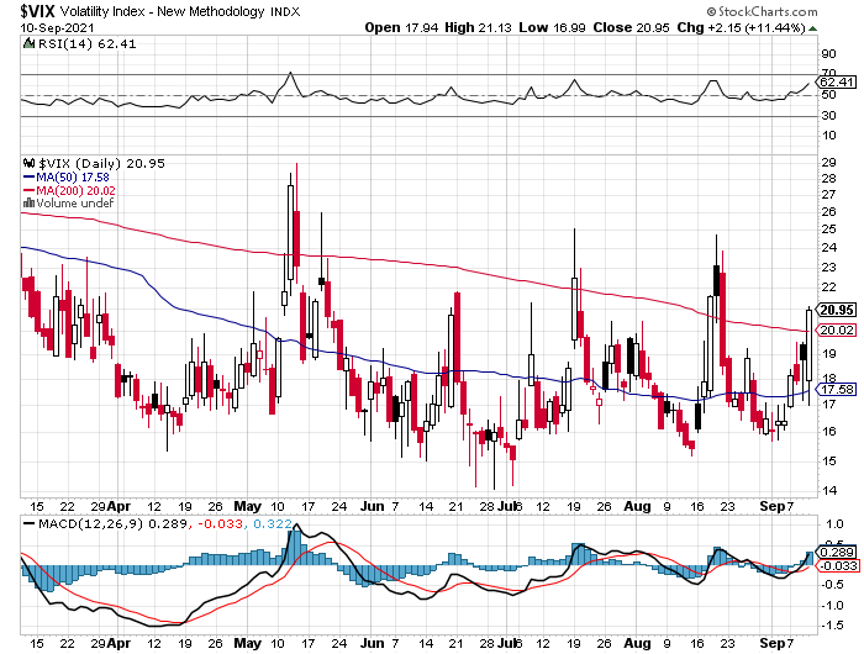
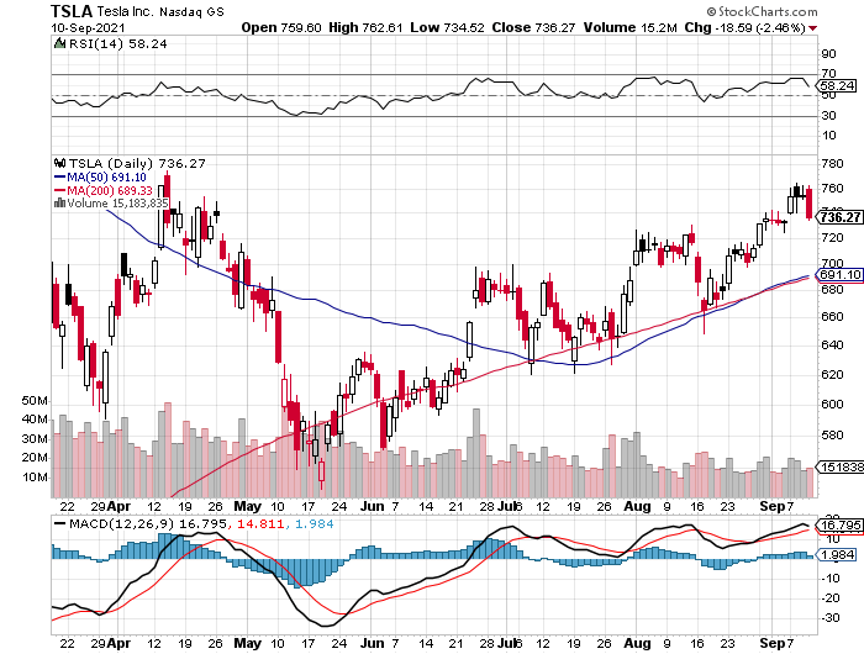



| Read in Browser | ||||||||||||||||||

| � | ||||||||||||||||||

| � | ||||||||||||||||||
| � |



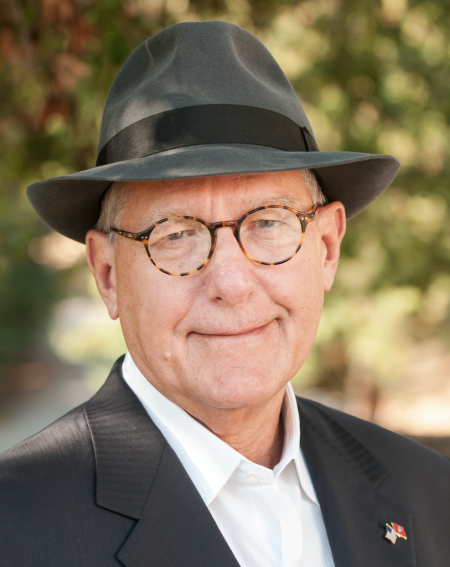



|

|
| Global Market Comments September 15, 2021 Fiat Lux Featured Trade: (IS USA, INC. A SHORT?) (TESTIMONIAL) 
|
| � |
Is USA Inc. a Short?What would happen if I recommended a stock that had no profits, was losing $3 trillion a year and had a net worth of negative $44 trillion? Chances are, you would cancel your subscription to the Mad Hedge Fund Trader, demand a refund, unfriend me from your Facebook account, and delete me from your Twitter network. Yet, that is precisely what my former colleague at Morgan Stanley did a few years ago, technology guru Mary Meeker. Now a partner at venture capital giant Kleiner Perkins, Mary has brought her formidable analytical talents to bear on analyzing the United States of America as a stand-alone corporation. The bottom line: the challenges are so great they would daunt the best turnaround expert. The good news is that our problems are not hopeless or unsolvable. The US government was a miniscule affair until the Great Depression and WWII when it exploded in size. Since 1965 when Lyndon Johnson’s “Great Society” began, GDP rose 2.7 times, while entitlement spending leaped 11.1 times. If current trends continue, the Congressional Budget Office says that entitlements and interest payments will exceed all federal revenues by 2025. Of course, the biggest problem is with healthcare spending, which will see no solution until healthcare costs are somehow capped. Despite spending more than any other nation, we get one of the worst results, with lagging quality of life, life spans, and infant mortality. Some 28% of Medicare spending is devoted to a recipient’s final four months of life. Somewhere, there are emergency room cardiologists making a fortune off of this. A night in an American hospital costs 500% more than in any other country. Social Security is an easier fix. Since it started in 1935, life expectancy has risen by 26% to 78, while the retirement age is up only 3% to 66. Any reforms have to involve raising the retirement age to at least 70 and means testing recipients. If you make $1 billion a year, you don’t need a monthly social security check. The solutions to our other problems are simple but require political suicide for those making the case. For example, you could eliminate all tax deductions, including those for home mortgage deductions, charitable contributions, IRA contributions, dependents, and medical expenses, and raise $1 trillion a year. That would only make a dent in our current $3 trillion a year budget deficit. Mary reminds us that government spending on technology laid the foundations of our modern economy. If the old DARPANET had not been funded during the sixties, Google, Yahoo, eBay, Facebook, Cisco, and Oracle would be missing today. Tech generates about 50% of all the profits in the US today. Global Positioning Systems (GPS) were also invented by and is still run by the government and has been another great wellspring of profits. (I got to use it during the 1980s while flying across Greenland when it was still top secret. The Air Force base that ran it was called “Sob Story”). There are a few gaping holes in Mary’s “thought experiment”. I doubt she knows that the Treasury Department carries the value of America’s gold reserves, the world’s largest at 8,965 tons worth $832 billion, at only $34 an ounce, versus an actual current market price of $1,861. By the way, the stash has only been seen once in 50 years. Nor is she aware that our ten aircraft carriers are valued at $1 each, against an actual cost of $10 billion each in today’s dollars. And what is Yosemite worth on the open market, or Yellowstone, or the Grand Canyon? These all render her net worth calculations meaningless. No, the USA is not a short. In fact, it is a long term scream long. The arguments as to why show up in the Diary of a Mad Hedge Fund Traderevery day of the year. During the publishing run of this letter, I have seen the Dow Average soar from 600 to 30,000. How could I think otherwise? Mary expounds at length on her analysis, which you can buy in a book entitled USA Inc. at Amazon by clicking here. 

|
TestimonialThanks to both of you for taking the time to answer me back. I am going to hang in there. I like your newsletter because the unbiased perspectives you share and the way in which you look at market opportunities in a realistic, factual manner. I am just hoping to turn that advantage into profit and learn. I don’t like financial advisors as they open your account, offer canned advice, and disappear after they take your money. I want to have the independent skills needed to manage my own wealth, as I grow old. I don’t expect that to happen overnight or without advice, but I am hoping that your newsletter is something above par not just in appearance, but in results. Time will tell. Thank you again for returning my emails. That says a lot. Best, Ryan Hammond, New York 
|
Quote of the Day[FONT=Arial, Helvetica, sans-serif]“I don’t know what’s going to happen next quarter and I don’t care,” said Jamie Diamond, CEO of JP Morgan Chase Bank.[/FONT] [FONT=Arial, Helvetica, sans-serif][/FONT][FONT=Arial, Helvetica, sans-serif] 
|
| This is not a solicitation to buy or sell securities The Mad Hedge Fund Trader is not an Investment advisor For full disclosures click here at: http://www.madhedgefundtrader.com/disclosures The "Diary of a Mad Hedge Fund Trader"(TM) and the "Mad Hedge Fund Trader" (TM) are protected by the United States Patent and Trademark Office The "Diary of the Mad Hedge Fund Trader" (C) is protected by the United States Copyright Office |

|
| Global Market Comments September 16, 2021 Fiat Lux Featured Trade: (TRADING FOR THE NON-TRADER), (ROM), (UXI), (UCC), (UYG) 
|
| � |
Trading for the Non-TraderI like to start out my day by calling readers on the US east coast and Europe, asking how they like the service, how I can improve the service, and what topics they would like me to write about. After all, at 5:00 AM Pacific time, they are the only ones around. You’d be amazed at how many great ideas I pick up this way especially when I speak to industry specialists or other hedge fund managers. Even the 25-year-old day trader operating out of his mother’s garage has been known to educate me about something. So when I talked with a gentleman from Tennessee this morning, I heard a common complaint. Naturally, I was reminded of my former girlfriend, Cybil, who owns a mansion on top of the levee in nearby Memphis overlooking the great Mississippi River. As much as he loved the service, he didn’t have the time or the inclination to execute my market-beating Trade Alerts. I said “Don’t worry. There is an easier way to do this.” Only about a quarter of my followers actually execute my Trade Alerts. The rest rely on my research to correctly guide them in the management of the IRAs, 401Ks, pension funds, or other retirement assets. There is also another, easier way to use the Trade Alert service. Think of it as “Trade Alert light.” Do the following. 1) Only focus on the four best of the S&P 500’s 101 sectors. I have listed the ticker symbols below. 2) Wait for the chart technicals to line up. Bullish long-term “Golden crosses” are setting up for several sectors. 3) Use a macroeconomic tailwind, like the ramp-up from a -31% GDP growth rate to +31% we are currently seeing. 4) Shoot for a microeconomic sweet spot, companies, and sectors that enjoy special attention. 5) Increase risk when the calendar is in your favor such as from November to May. 6) Use a modest amount of leverage in the lowest risk bets but not much. 2:1 will do. 7) Scale in, buying a few shares every day on down days. Don’t hold out for an absolute bottom. You will never get it. The goal of this exercise is to focus your exposure on a small part of the market with the greatest probability of earning a profit at the best time of the year. This is what grown-up hedge funds do all day long. Sounds like a plan. Now, what do we buy? (ROM) – ProShares Ultra Technology 2X Fund – Gives you a double exposure to what will be the top performing sector of the market for the next six months, and probably the rest of your life. Click here for details and largest holdings. (UXI) – ProShares Ultra Industrial Fund 2X – Is finally rebounding off the back of a dollar that will slow down its ascent once the first interest rate hike is behind us. Onshoring and incredibly cheap valuations are other big tailwinds here. For details and largest holdings, click here. (UCC) – ProShares Ultra Consumer Services 2X Fund – Is a sweet spot for the economy, as tight-fisted consumers finally start to spend their gasoline savings now that it no longer appears to be a temporary windfall. This is also a great play on a housing market that is on fire. It contains favorites like Home Depot (HD) and Walt Disney (DIS) which we know and love. For details and largest holdings, click here. (UYG) – ProShares Ultra Financials 2X Fund – Yes, after six years of false starts, interest rates are finally going up, with a December rate hike by the Fed a certainty. My friend, Janet, is handing out her Christmas presents early this year. This instantly feeds into wider profit margins for financials of every stripe. For details and largest holdings, click here. Of course, you’ll need to keep reading my letter to confirm that the financial markets are proceeding according to the script. You will also have to read the Trade Alerts as we include a ton of deep research in the Updates. You can then unload your quasi-trading book with hefty profits in the spring just when markets are peaking out. “Sell in May and Go Away?” I bet it works better than ever in 2021. 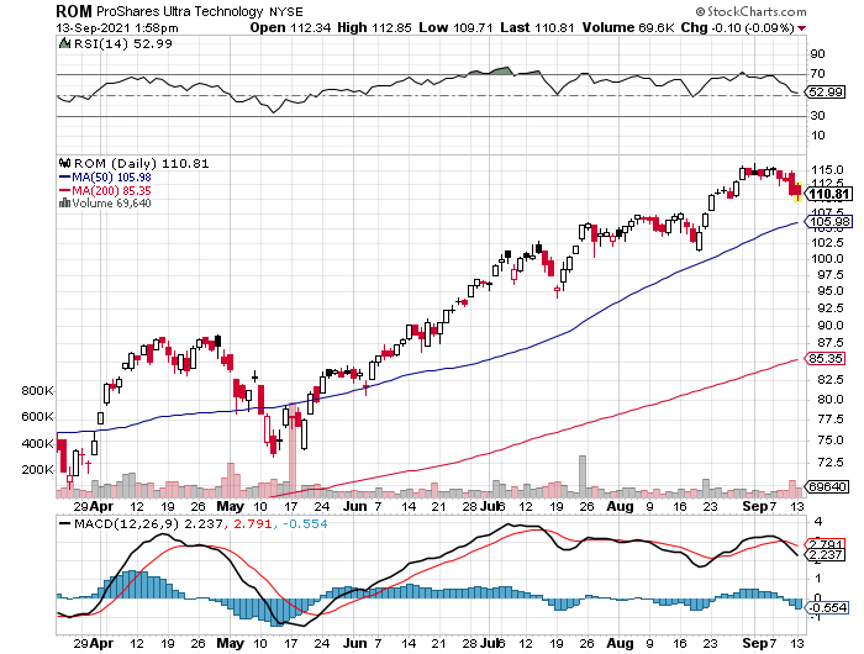
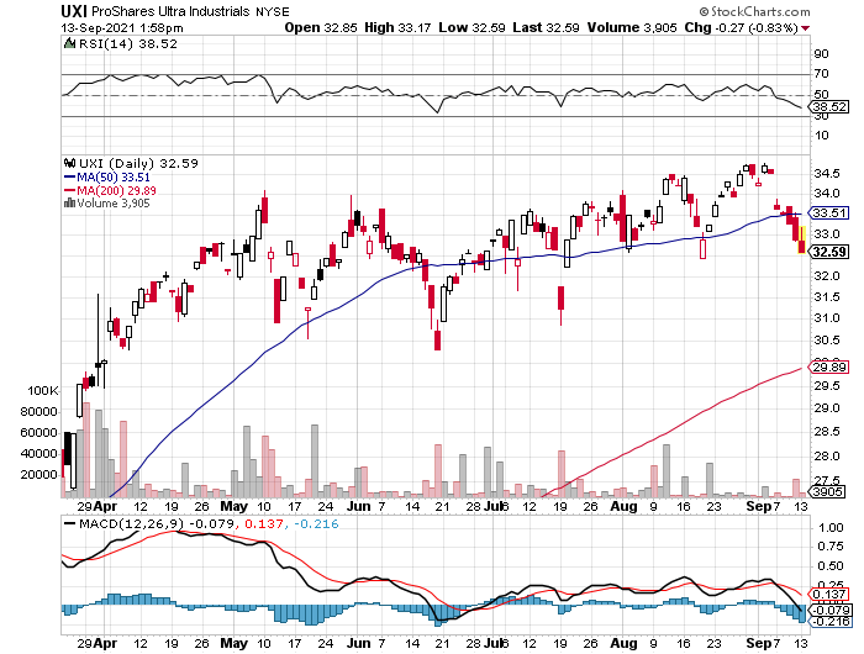
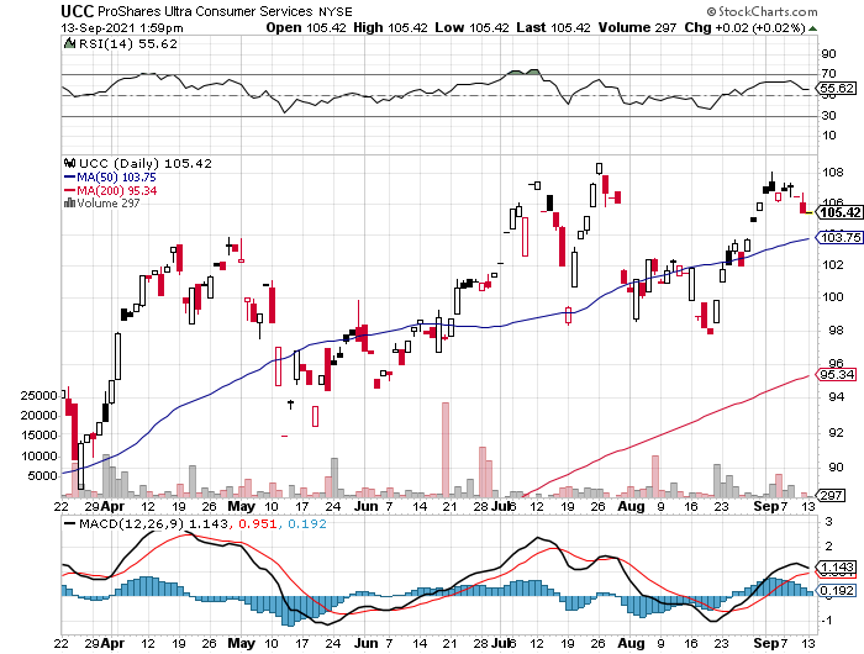
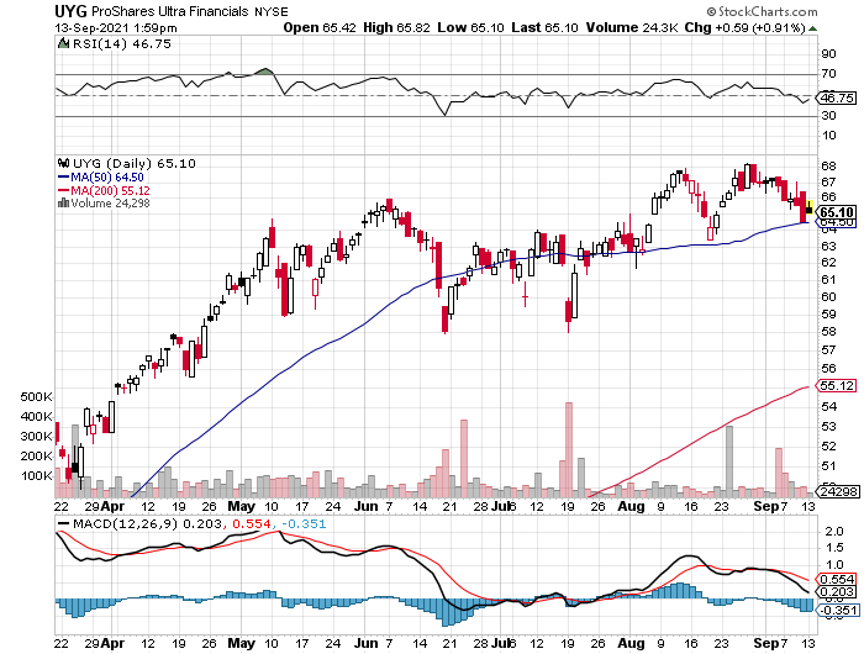

|
Quote of the Day[FONT=Arial, Helvetica, sans-serif]"The less prudent you find the actions of others, the more prudent you need to act yourself," said Oracle of Omaha, Warren Buffett.[/FONT] [FONT=Arial, Helvetica, sans-serif][/FONT][FONT=Arial, Helvetica, sans-serif] 
|
| This is not a solicitation to buy or sell securities The Mad Hedge Fund Trader is not an Investment advisor For full disclosures click here at: http://www.madhedgefundtrader.com/disclosures The "Diary of a Mad Hedge Fund Trader"(TM) and the "Mad Hedge Fund Trader" (TM) are protected by the United States Patent and Trademark Office The "Diary of the Mad Hedge Fund Trader" (C) is protected by the United States Copyright Office |
| Read in Browser | ||||||||||||||||||||||||||

| ||||||||||||||||||||||||||

| ||||||||||||||||||||||||||
|
| Good morning. (Was this newsletter forwarded to you? Sign up here.) |
|
| [h=2]Facebook’s internal affairs[/h] |
| This week, The Wall Street Journal published a bombshell investigation about how Facebook responds to the flaws in its platform. The four-part report, which is largely based on internal documents, suggests that the company often plays down what it knows about these problems. According to The Journal, at least some of the documents have been turned over to the S.E.C. and Congress by a whistle-blower. |
| A Facebook spokesman responded to the investigation in a tweet: “As the Wall Street Journal itself makes clear, we have a team of experts who help us uncover patterns of harmful behavior so we can disrupt it. We’ve got arguably more experts and resources dedicated to this work than any other consumer technology company in the world.” |
| Among the investigation’s findings: |
| Facebook exempts high-profile users from some rules. The system, called “XCheck,” allows at least 5.8 million V.I.P. users to avoid Facebook’s normal enforcement process. The company told its Oversight Board that the system was used in “a small number of decisions.” |
| Instagram’s own research shows risks to teenagers’ mental health. The service, which is owned by Facebook, has been studying its effect on young users for three years. “We make body image issues worse for one in three teen girls,” read one slide in an internal presentation, according to The Journal. Senators Richard Blumenthal and Marsha Blackburn said that they would launch an inquiry into the research, which Instagram defended in a blog post. |
| Facebook knows its algorithm rewards outrage. In 2018, the company made changes to its algorithm that it said would encourage interactions among families and friends. But internal research found that publishers and political parties responded by creating content that produced a lot of discussion — often because it was sensational and divisive. “Misinformation, toxicity, and violent content are inordinately prevalent among reshares,” researchers wrote in an internal memo. |
| Facebook has been slow to stop drug cartels and human traffickers from using its platform. Internal documents reviewed by The Journal revealed that Facebook employees had flagged criminal use of the platform in some countries but received a weak response from the company. |
| [h=3]HERE’S WHAT’S HAPPENING[/h] |
| A former World Bank leader is in hot water. An investigation by the bank’s ethics committee found that Kristalina Georgieva, the bank’s former chief, and other top officials pressured staff to raise China’s standing in a 2018 report so as not to anger the country. Georgieva, who now runs the I.M.F., denied accusations that she had acted inappropriately. |
| Italy makes showing a health pass a requirement to go to work. The country will require some 23 million people to show proof that they have received at least one dose of a coronavirus vaccine, or have recently recovered from Covid, or else take a virus test every two days. Workers who do not comply can be suspended from their jobs and fined. |
| Retail sales unexpectedly rise, but reveal an uneven pace of recovery. The 0.7 percent gain in August, which came after a 1.8 percent decline in July, was driven by a rise in spending on clothing, electronics, furniture and home goods. But sales at bars and restaurants fell, after a rise in the previous month. |
| The Fed is re-examining its rules on trading by officials. The move follows an outcry over disclosures that the presidents of the Boston and Dallas regional Fed banks bought and sold stocks and real estate-tied assets last year. The transactions complied with Fed guidelines, but involved securities that could be affected by the central bank’s decisions. |
| The House calls oil executives in for questioning about misinformation. The House oversight committee has summoned executives from Exxon, Chevron, BP and Shell, as well as related industry groups, to testify next month about their parts in spreading disinformation about the role of fossil fuels in global warming. |
| [h=2]Goldman’s new office[/h] |
| This week, Goldman Sachs planted its flag far from any of the world’s major financial centers. It opened a new office in Birmingham, Britain’s second-largest city. So far, about 100 people have been hired or moved there. |
| The Times’s Eshe Nelson spoke to Richard Gnodde, the head of Goldman Sachs International, at the office’s opening about Goldman’s future in Britain after Brexit and how the investment bank’s return-to-office plans were progressing. The conversation was condensed and edited for clarity. |
| Post-Brexit agreements between Britain and the E.U. aren’t forthcoming, so British regulators are reviewing a lot of their financial rules. Is there anything you want to see changed? |
| Where we would want change is redundant, unnecessary regulation, which pushes up our cost of production because we are filing reports that no one ever looks at. |
| There’s a set of rules that right now is identical given that we were all joined up 12 months ago. If, on the margin, either side starts tinkering with those rules so there’s just a marginal difference, but no real benefit, we can’t then apply one set of processes across the board. Let’s not make changes for changes’ sake. |
| Do you expect to move more staff out of London? |
| We are done with the work that we needed to do for Brexit. But our teams will continue to evolve. And so there will be movement from here into Europe. |
| Are you planning more acquisitions in Europe? |
| To the extent that we saw further interesting acquisition opportunities across the asset management space, we’d be interested in that. And something potentially in the consumer space. |
| You removed social distancing in your British offices, returned them to full occupancy and encouraged staff to return. Did you feel something was lost when most people were working from home? |
| Every year we bring a lot of people into the firm. And how do you integrate, how do you train those people? Memories fade. The office is our center of gravity, absolutely crystal clear. People should be spending the majority of their time in the office, but around that there can be flexibility. |
| [h=2]“It was beyond a small matter of negligence. It was complete and thorough.”[/h] |
| — William Galvin, the Massachusetts secretary of the commonwealth, on MassMutual’s lack of supervision of Keith Gill, the insurer’s former employee who became famous as the meme-stock trader known as “Roaring Kitty.” In a settlement with the state, MassMutual will pay a $4 million fine for failing to adequately oversee Gill, a registered securities broker who had carried out trades on behalf of other people not affiliated with the insurer without its approval. |
| [h=2]Setting sail with Bain and Virgin[/h] |
| Virgin Voyages, a joint venture between Bain Capital and Richard Branson’s Virgin Group, made its U.S. debut this week, more than a year later than scheduled. DealBook spoke with Ryan Cotton, the head of the consumer and retail group at Bain, about the venture and the prospects for the cruise industry, which has been upended by the pandemic. |
| Branson has wanted to start a cruise line for about 25 years, Cotton said. (He still has his original sketches.) Seven years ago, he got serious about it and brought in Bain to help with financing a Virgin-branded cruise ship. The idea was to bring to cruises the same sensibility that Branson brought to his airlines: younger and slightly edgy. (There is a tattoo parlor onboard.) |
| The venture’s first ship, the Scarlet Lady, has been cruising around Britain this summer on short trips open only to British residents. It was originally supposed to begin operations from the U.S. early last year, just as everything shut down. Some cruise ships were hit hard by Covid outbreaks early in the pandemic, which decimated the industry. But demand among aficionados has proved resilient, giving cruise lines hope. |
| “The Covid situation has not gone the way any of us expected,” Cotton said. But the vaccine rollout has given the new venture confidence in going ahead with a soft launch of the adult-only cruises in the U.S. Ships are for the vaccinated only, and travelers need to be tested before they board. Onboard precautions include grab-and-go food options, capacity restrictions and an air ionization system. |
| [h=2]Your feelings on handshakes[/h] |
| Last week, we wrote about a survey that suggested the majority of people aren’t ready to shake hands again — and may never feel comfortable doing it. We asked readers how the pandemic had changed your approach to greetings, and here’s what some of you said: |
| “The handshake is outdated. Its origin was to affirm that neither party was armed — hardly a cordial way to start a business meeting. If that’s the pretext of the meeting, you really do have a lot to cover!” — Ed in Connecticut |
| “I feel that the pandemic has put to bed the hug that many men greet women with. I hope the pandemic brings back a more subtle version of a contactless Regency bow, which can both acknowledge and dismiss without a word said.” — Elizabeth in New York |
| “A verbal greeting alone feels cold, especially in professional greetings. A bow doesn’t seem to fit here. The elbow bump is just awkward. I’m ready to take up a new ‘greeting custom’ and it would be helpful if we could have some agreement on a sanitary replacement for the sometimes damp, other times weirdly limp, and nearly always germy handshake.” — Jennifer in California |
| Want to share The New York Times with your friends and family? Invite them to enjoy unlimited digital access to our journalism with this special offer. |
| [h=3]THE SPEED READ[/h] |
| Deals |
|
| Policy |
|
| Best of the rest |
|
| Anna Schaverien contributed reporting. |
| Thanks for reading! We’ll see you tomorrow. |
| We’d like your feedback. Please email thoughts and suggestions to dealbook@nytimes.com. |
|
|
|
|
|
|
| Andrew Ross Sorkin, Founder/Editor-at-Large, New York @andrewrsorkin |
| Jason Karaian, Editor, London @jkaraian |
| Sarah Kessler, Deputy Editor, Chicago @sarahfkessler |
| Stephen Gandel, News Editor, New York @stephengandel |
| Michael J. de la Merced, Reporter, London @m_delamerced |
| Lauren Hirsch, Reporter, New York @LaurenSHirsch |
| Ephrat Livni, Reporter, Washington D.C. @el72champs |


| Read in Browser | |||||||||||||||||

| � | |||||||||||||||||

| � | |||||||||||||||||
| � |

|
| Global Market Comments September 17, 2021 Fiat Lux Featured Trade: (WHY TECHNICAL ANALYSIS IS A DISASTER) (THE COOLEST TOMBSTONE CONTEST) (SJB), (JNK), (HYG) 
|
| � |
Why Technical Analysis is a DisasterI recently heard an amazing piece of information from a client. Fidelity recently conducted a study to identify their best-performing clients. They neatly fell into two groups: people who forgot they had an account at Fidelity, and dead people. Who do these two groups do so well? Because the NEVER sell, catching the entire bull move, devoid of capital gains taxes and transaction costs. It all underlines the futility of trading the markets without true professional guidance, something many aspire to but few actually accomplish. Of the many hundreds of online newsletters and trade mentoring services, I only know of three which actually make money for clients. Those would be mine and two others, and I’m not talking about who the other two are. It is an industry filled with professional marketers, charlatans, and conmen. Let me point out a few harsh lessons learned from this most recent summer meltdown and the rip-your-face-off rally that followed. We are now transitioning from a “Sell in May” to a “Buy in November” posture. The next six months are ones of historical seasonal market strength (click here for the misty origins of this trend.) The big lesson learned this summer was the utter uselessness of technical analyses. Usually, these guys are right only 50% of the time. This year, they missed the boat entirely. When the S&P 500 (SPY) was meandering in a narrow range, and the Volatility Index (VIX) hugged the $24 neighborhood, they said this would continue for the rest of the year. It didn’t. The biggest losers? Algorithms, which used the decisive break of the (SPY) $330 level in September to go heavily short. If you did, you lost your shirt. The market just shed a couple more points, reversed, and then kept going, and going, and going up. This is why technical analysis is utterly useless as an investment strategy. How many hedge funds use a pure technical strategy and a stand-alone basis? Absolutely none as it doesn’t make any money. At best, it is just one of 100 tools you need to trade the market effectively. The shorter the time frame, the more accurate it becomes. On an intraday basis, technical analysis is actually quite useful. But I doubt few of you engage in this hopeless persuasion. Leave it for the kids. This is why I advise portfolio managers and financial advisors to use technical analysis as a means of timing order executions, and nothing more. Most professionals agree with me. Technical analysis derives from humans’ preference for looking at pictures instead of engaging in abstract mental processes. A picture is worth 1,000 words, and probably a lot more. This is why technical analysis appeals to so many young people entering the market for the first time. Buy a book for $5 on Amazon, and you can become a Master of the Universe. Who can resist that? The problem is that high-frequency traders also bought that same book from Amazon a long time ago and have designed algorithms to frustrate every move of the technical analyst. Sorry to be the buzz kill, but that is my take on technical analysis. I have a much better solution than forgetting you have a trading account, or dying. Take Cunard’s round-the-world cruise (click here). I have been sailing with Cunard since the 1970s when the original Queen Elizabeth was still afloat. I’ve lost count of how many Transatlantic voyages I have taken across the pond. For a mere $19,999 you can spend 122 days circumnavigating the globe with Cunard from Southampton, England in their cheapest inside cabin. That includes all the food you can eat for four months. On the way, you can visit such exotic destinations as Bora Bora, The Seychelles, Reunion, and Moorea. Not a bad deal. By the time you get home, you will probably earn enough in your investment account to pay for the entire trip. Hope you enjoyed your cruise. 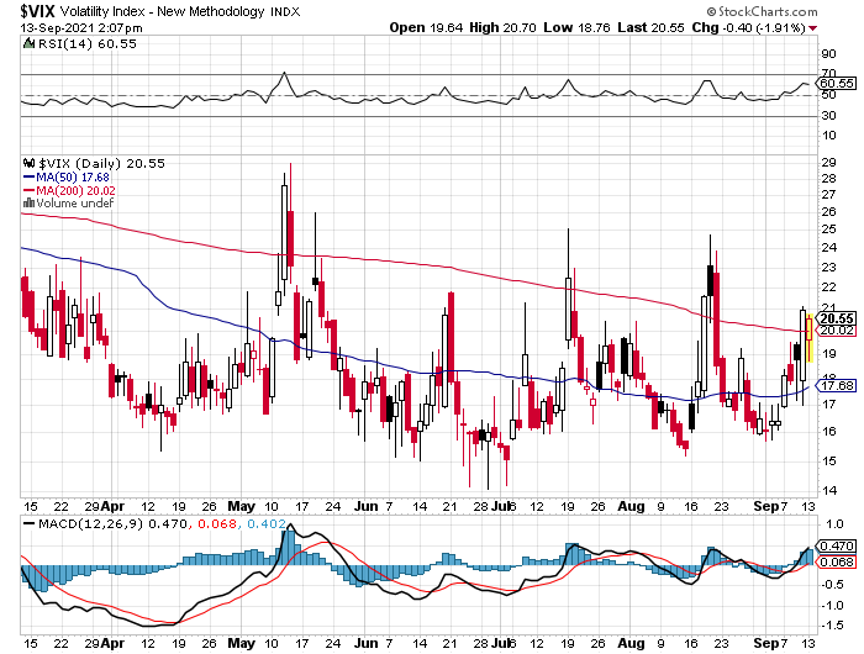
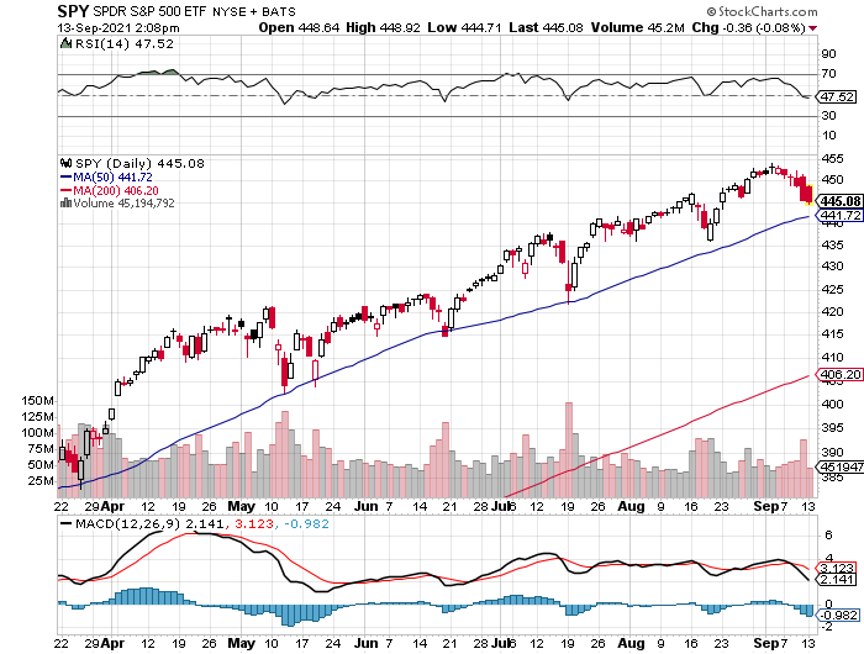
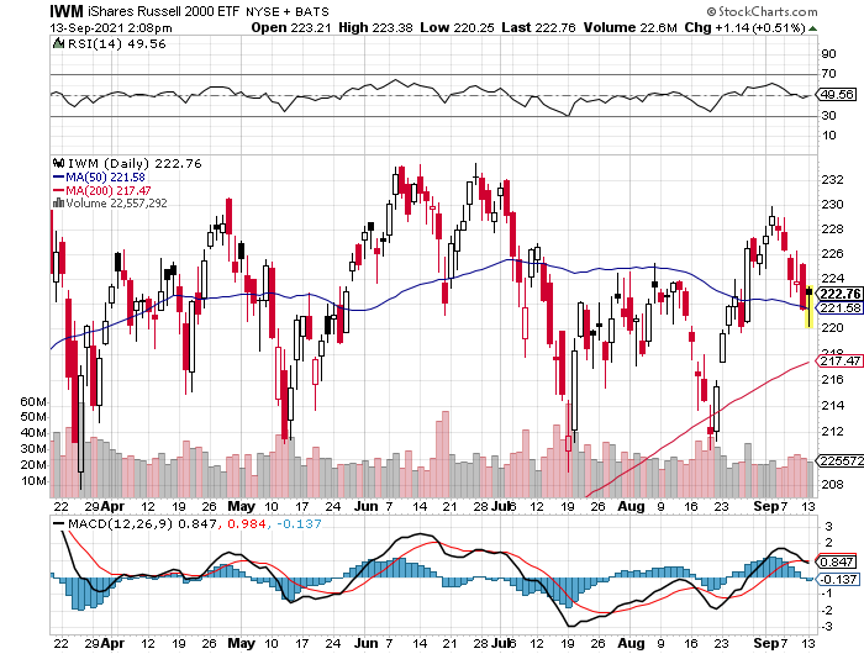
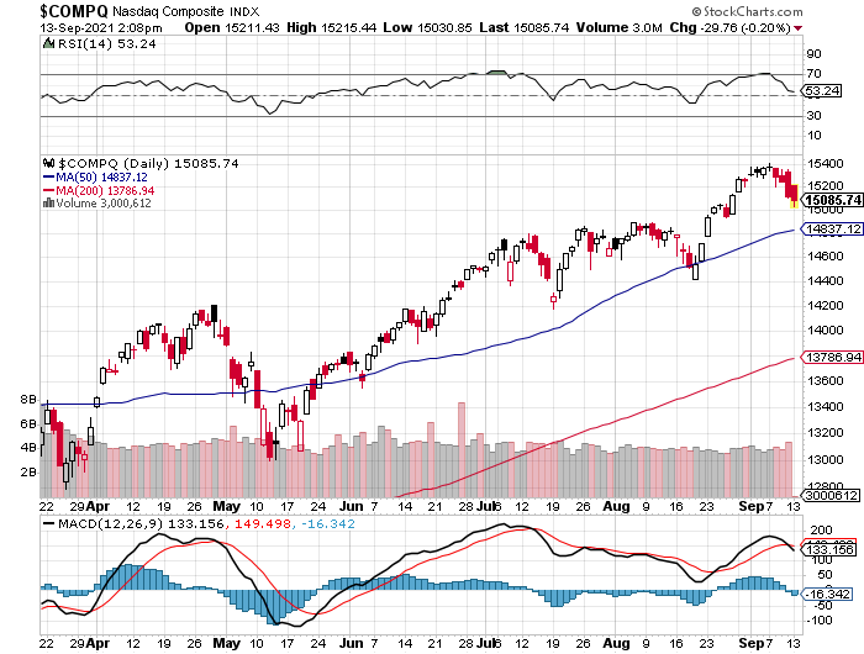

|
The Coolest Tombstone ContestTo prove that The Diary of a Mad Hedge Fund Trader only deals with the highest quality, top drawer clientele, I want to share the picture below sent in by a subscriber. 
|
Quote of the Day“I’d rather wear out than rust out,” said country music singer Dolly Parton, now 74. [FONT=Arial, Helvetica, sans-serif][/FONT][FONT=Arial, Helvetica, sans-serif] 
|
| This is not a solicitation to buy or sell securities The Mad Hedge Fund Trader is not an Investment advisor For full disclosures click here at: http://www.madhedgefundtrader.com/disclosures The "Diary of a Mad Hedge Fund Trader"(TM) and the "Mad Hedge Fund Trader" (TM) are protected by the United States Patent and Trademark Office The "Diary of the Mad Hedge Fund Trader" (C) is protected by the United States Copyright Office Futures trading involves a high degree of risk and may not be suitable for everyone.[FONT="][/FONT] |
| � | |||||||||||||||||||
Read in Browser | |||||||||||||||||||

| |||||||||||||||||||

| |||||||||||||||||||
|
Week two NFL entertainment
Dallas- LAC over 55
Titans +6.5
Carolina +3.5
Pittsburgh -6.5


| Read in Browser | |||||||||||||||||||

| � | |||||||||||||||||||

| � | |||||||||||||||||||
| � |

September 20, 2021 Continue reading the main story | |
| Good morning. (Was this newsletter forwarded to you? Sign up here.) |
|
| [h=2]Taxing times[/h] |
| There’s a well-oiled revolving door between the largest accounting firms in the U.S. and the Treasury Department, The Times’s Jesse Drucker and Danny Hakim report. The cycling of professionals between the public and private sectors is nothing new, but the ability of the biggest tax advisers to embed their employees inside the government’s most important tax policy jobs has largely escaped public scrutiny. |
| Here’s how it works: |
|
| By the numbers: During the past four presidential administrations, there have been at least 35 people, including five of the past six heads of the Treasury’s tax policy office, who left jobs at a top accounting firm to take a tax policy position in the government, only to return to their previous employers at a later date. About half of those returning individuals were made partners, a position that can pay as much as $1 million a year, according to public records reviewed by The Times and interviews with current and former government and industry officials. |
| Government agencies rely on expertise from the private sector to understand the real-world effects of the tax code. Federal rules prohibit government officials from working on many matters in which they have financial interests, like having an unwritten agreement to return to their prior firm. |
| [h=3]PAID POST: A MESSAGE FROM DARKTRACE[/h]Cyber Security: A New Era of Threat Cybercriminals are outsmarting human security teams. But with Darktrace, organizations can regain the upper hand, using Self-Learning AI that autonomously interrupts novel threats, without disrupting day-to-day business. LEARN MORE > |
| (Accounting firms aren’t the only ones taking advantage of Washington’s revolving door. As DealBook recently reported, crypto firms have been aggressively hiring former regulators to bolster their lobbying operations.) |
| Deloitte, PwC, RSM and other accounting firms declined to comment on The Times’s investigation. Eric Sloan, a former senior tax lawyer at Deloitte, said that he saw nothing wrong with telling junior employees that stints in government would earn them big financial rewards when they returned to private practice. Tax professionals may also want to join the government to make changes that they genuinely believe are in the public interest. |
| The accounting industry’s back-and-forth arrangements get results. The taxes that corporations pay, as a percentage of G.D.P., have been shrinking for years. This share now sits near a 50-year low, and some former industry veterans say that the personnel flow between the private and public sectors has played a part. |
| “Administering the law is complicated, and corporate America distributes huge paychecks to revolving-door experts to give them the edge,” Jeff Hauser of the Revolving Door Project, part of the liberal-leaning Center for Economic and Policy Research, told DealBook. Paying government officials more would slow the door’s swing, he said: “The public is best off when government employees see the public interest and their personal interest as one and the same.” |
| [h=3]HERE’S WHAT’S HAPPENING[/h] |
| Global markets shudder as Evergrande, a heavily indebted Chinese property developer, faces deadlines. The beleaguered company owes $300 billion to creditors, including tens of thousands of its own staff, making it China’s most indebted company. With some interest payments due this week, fears abound that a default could ripple through the financial system. |
| President Biden kicks off a global vaccination push. He will use a U.N. General Assembly meeting this week to urge other countries to distribute doses of coronavirus vaccines to nations in desperate need. Separately, Pfizer and BioNTech announcedthat their coronavirus shots have been shown to be safe and effective in children ages 5 to 11. |
| Facebook responds to allegations that it has failed to address the ill effects of its platform. In a blog postresponding to The Wall Street Journal’s series about the tech giant’s shortcomings, Nick Clegg, Facebook’s head of public affairs, pointed out that the company itself had produced the research that allowed others to look at the social network more critically. Clegg said Facebook understood its “significant responsibility.” |
| Nabisco workers end a weekslong strike. The union representing the snack maker’s employees in five states said over the weekend that members had overwhelmingly approved a new four-year contract. The agreement includes hourly wage increases and a higher company match to pension contributions. |
| Streaming services triumph at the Emmys. Netflix won two of the top awards, with “The Crown” taking the best drama prize and the chess-prodigy odyssey “The Queen’s Gambit” claiming the title of best limited series. “Ted Lasso,” of Apple TV+, won for best comedy series. |
|
| [h=2]The irony of stablecoins[/h] |
| Stablecoins are cryptocurrencies whose values are pegged to assets like gold or the dollar, which is meant to make them less volatile. Stablecoins may also be the most ironically named innovation in the cryptocurrency industry in the eyes of regulators in Washington. But they are no laughing matter. |
| Despite their name, stablecoins may wobble dangerously. Officials in Washington are worried that firms issuing these cryptocurrencies are not holding adequate reserves. If a critical mass of stablecoin holders want to convert their tokens simultaneously, that could lead to a kind of modern-day bank run. The use of stablecoins has grown so explosively in the past year, from virtual nonexistence not long ago to a more than $120 billion market, that regulators are increasingly nervous. The issuer of the most popular stablecoin, Tether, this year settled an investigation with the New York attorney general over financial mismanagement. |
| Are stablecoins a threat to the wider financial system?Federal regulators fear that without fast action and strict oversight of this corner of the crypto world, they might be. In a report due this fall, the Treasury Department may direct the Financial Stability Oversight Council to review whether this kind of cryptocurrency, or its issuers, should be deemed “systemically important.” The designation would allow for strict federal regulation to address issues beyond reserve levels, such as consumer and data protections, technological resilience and financial crime prevention. As it stands, stablecoins are modestly regulated through a patchwork of state banking and money transmission rules. |
| Stablecoins are critical to crypto’s continued growth. They underpin many of the trading, lending and borrowing services on crypto exchanges, as well as the burgeoning alternative financial services on the blockchain that is touted as the future of payments. Stablecoins could also perform the function of a government-issued digital dollar, which is under consideration by the Fed. Jay Powell, the Fed chair, has suggested a U.S. central bank digital currency could undercut the entire cryptocurrency sector. “I think that’s one of the stronger arguments in its favor,” he told Congress. |
| [h=2]“Failing to raise the debt limit would produce widespread economic catastrophe.”[/h] |
| — Janet Yellen, the Treasury secretary, in an op-ed for The Wall Street Journal urging Congress to act as the U.S. approaches its borrowing limit. Yellen noted that lawmakers have altered the country’s debt ceiling about 80 times since 1960, and argued that they must do so again in the next few weeks, or “the federal government will be unable to pay its bills.” |
| [h=2]The week ahead[/h] |
| A call on booster shots: Last month, President Biden announced a plan to offer a third Covid-19 vaccine shot to most Americans as early as this week. But the plan was in flux as scientists debated whether booster shots were necessary. On Friday, advisers to the F.D.A. unanimously recommended a booster shot limited to Pfizer vaccine recipients who are 65 or older or at high risk of severe Covid infections. Although the F.D.A. is not required to follow its advisers’ recommendations, it typically does. The agency is expected to make a decision in the coming days. |
| Taper talk: The Fed gathers this week to discuss monetary policy, and this meeting could be an important one. Many economists expect the central bank to reveal details about how and when it plans to begin winding down its bond-buying program, one of several policies it created to reduce the economic impact of the pandemic. The Fed will also release new economic projections, which will signal how much and how quickly it expects high inflation to fade. |
| Unanswered questions: After a streak of record highs, the stock market has looked more indecisive of late. That’s understandable, given big questions that are likely to be answered in the coming weeks, including whether the Fed will begin pulling back its economic support and whether Congress will raise the federal borrowing limit, not to mention the wait for the final details of an infrastructure spending package — and how it will be funded. |
|
| From the TimesMachine: On this day 148 years ago, The Times reported that “Wall Street was the liveliest place in New York” as the early days of what is known as the Financial Panic of 1873took hold. The New York Stock Exchange was forced to suspend trading for the first time in its history and the crash precipitated a depression that lasted for six years. |
| Want to share The New York Times with your friends and family? Invite them to enjoy unlimited digital access to our journalism with this special offer. |
| [h=3]THE SPEED READ[/h] |
| Deals |
|
| Policy |
|
| Best of the rest |
|
| Anna Schaverien contributed reporting. |
| Thanks for reading! We’ll see you tomorrow. |
| We’d like your feedback. Please email thoughts and suggestions to dealbook@nytimes.com. |
|
|
|
|
|
|
| Andrew Ross Sorkin, Founder/Editor-at-Large, New York @andrewrsorkin |
| Jason Karaian, Editor, London @jkaraian |
| Sarah Kessler, Deputy Editor, Chicago @sarahfkessler |
| Stephen Gandel, News Editor, New York @stephengandel |
| Michael J. de la Merced, Reporter, London @m_delamerced |
| Lauren Hirsch, Reporter, New York @LaurenSHirsch |
| Ephrat Livni, Reporter, Washington D.C. @el72champs |

|
| Global Market Comments September 20, 2021 Fiat Lux Featured Trade: (INTRODUCING THE MAD HEDGE BITCOIN PLATINUM SERVICE), (MARKET OUTLOOK FOR THE WEEK AHEAD, or THE BATTLE OF THE 50-DAY), (SPY), (TLT), (DIS), (BLOK), (MSTR), (QQQ), (EEM), (UUP) 
|
| � |
Introducing the Mad Hedge Bitcoin Platinum ServiceThe response to the new Mad Hedge Bitcoin Letter has been so enormous that I have decided to launch a substantially upgraded, more comprehensive, and heavy-duty service, the Mad Hedge Bitcoin Platinum Service. The complete service will include: One-on-one Coaching & Trade Mentoring for 10 sessions Completion entitles students to a signed Bitcoin Master Traders Certificate Three Crypto-related newsletters a week on Tuesday, Thursday, and Saturday Proprietary Mad Hedge Bitcoin Market Timing Index with charts and buy and sell signals Urgent Trade Alerts at market sweet spots Biweekly Strategy Webinars with an interactive Q&A Access to 14-year Mad Hedge investment database searchable by name and ticker symbol. Get the unfair advantage trading Bitcoin you deserve. To subscribe now please click here. To upgrade your existing subscription to the Mad Hedge Bitcoin Letter, please put “Bitcoin Upgrade” in the subject line email customer support at support@madhedgefundtrader.com. 
|
The Market Outlook for the Week Ahead, or The Battle of the 50-DayThe next long-term driver of financial markets will be rising interest rates. It’s not a matter of if, but when. Is it this month, or next month? One way or the other it’s coming. Which means you should be rearranging your portfolio right now big time. In a rising interest rate regime seven big things will happen: 1) Bonds (TLT) will collapse. 2) Domestic recovery and commodity stocks (FCX) will soar. 3) Technology stocks (QQQ) will move sideways to down 10% 4) The US dollar (UUP) craters 5) Foreign stock markets (EEM) do better than American ones. 6) Bitcoin (BLOK), (MSTR) and other cryptocurrencies go through the roof. 7) Residential real estate keeps appreciate, but at a slower rate. These trends will continue for six months, or until long-term interest rates hit an interim peak, such as at 2.00%. The delta variant gave us a secondary recession. Its demise will give us a secondary recovery, and the same sectors will prosper as with the first. According to the Johns Hopkins University of Medicine, this is happening right now. The only caution here is that long-term investors should probably keep their technology stocks. Once rates hit the next interest rate peak again, it will be off to the races for tech once again. In the long term, tech always comes back, and tech always wins. Of course, the major event of the coming week will be the Federal Reserve’s Open Market Committee meeting where interest rates are decided and the press conference with Jay Powell that follows. Interest rates won’t move. It’s the press conference that is crucial, where we gain insights into the taper. What’s different this time is that the European Central Bank has already begun their taper with an economy far weaker than ours. Will Jay take the cue? Far and away, the most reliable indicator for “BUY” timing since the presidential election has been the 50-day moving average for the S&P 500. Increasing stock weightings there and you were golden. The problem now is that we have not seen the index close below the 50-day for two consecutive days for a record 221 days. This has not happened for 31 years. We all know the reasons: Record low-interest rates making cash trash, seven years of quantitative easing, and a global liquidity glut. Exploding equity in homes and stock portfolios helps too. Still, 31 years is a long time to be this bullish. I saw all this coming a mile off. Since the election, I have relentlessly pursued this market with a super aggressive 100% weighting. Then I started paring back risk in June. In July and August, I cut back further to the bone, running minuscule 20% long weightings against a few shorts. And this is how you manage your risk control. When markets are rigged in your favor and the lunch is free, you bet the ranch. When they aren’t, you cower on the sidelines and watch others take insane risks. But who am I to know? I’ve only been doing this for 51 years, and 58 years if you count the (IBM) shares I bought with my paperboy earnings. Antitrust Comes Home to Roost at Apple, sending the stock down $9 in two days. A judge ruled that Apple will no longer be allowed to prohibit developers from providing links or other communications that direct users away from Apple in-app purchasing. Apple typically takes a 15% to 30% cut of gross sales. It’s a slap on the wrist, as Apple’s main revenue stream is still from iPhones. The judge ruled in favor of Apple on nine of ten other issues. It creates massive new opportunities for hundreds of other Silicon Valley start-ups. Still, if you were looking for an excuse to take profits, this is it. Buy (AAPL) on dips. Tesla to get EV Tax Credit Restored in a new overhaul of alternative energy subsidies. Both Tesla (TSLA) and General Motors (GM) lost their $7,500 per car subsidies when sales topped 200,000. GM will get an extra $5,000 discount for union-made cars. Tesla is ferociously non-union. Maybe this explains the 36% rally since May. It should help (TSLA) get reach its million-vehicle target for 2021 if it can get enough chips. Buy (TSLA) on dips. China Inflation Hits 13 Year High, up 9.5% YOY. Soaring commodity and coal prices are the issue. Coal is up 57% YOY, reflecting an energy shortage during the covid economic rebound. It predicts a hot CPI for the US on Tuesday. The Consumer Price Index rose by 5.3% YOY and up 0.3% in August. It was a seven-month low, with delta clearly a drag. Food and energy came in lighter than expected. Prices for used cars, air tickets, and insurance fell. Stocks loved it, rising triple digits, and bond prices halved losses. St next week’s FOMC we’ll see how Jay really feels. House Looking at a Top 26.5% Corporate Tax Rate, well up from the current 21% but not as high as the 28% that was feared. Capital gains would rise from 20% to 25%. The goal is to raise $2.5 trillion to get the $3.5 trillion spending package into law. It’s all a trial balloon for what might be possible. Stocks loved it. Amazon to Hire 125,000 and boost wages to $18 an hour. They are also paying $3,000 signing bonuses and taking pay up to $22.50 in prime areas like New York and California. It’s all part of a strategy to make (AMZN) the “best employer in the world”. Buy (AMZN) on dips as its dominance on online commerce grows. China Destroys Casino Stocks, threatening to increase oversight of their Macao operations. The concern is that China will pull the gaming licenses of foreign companies when they come up for renewal in June. Buy (WYNN) and (LVS) on the dip. Weekly Jobless Claims Come in at 332,000, a new post-pandemic low. The previous week was revised down even lower, to 312,000. The end of pandemic unemployment benefits is no doubt a factor, driving people off of their couches and back to the salt mines. Is this the light at the end of the tunnel? Bitcoin Charts are Showing a Golden Cross, which usually presages upside breakouts in the cryptocurrency. A golden cross is where the 50-day moving average pierces the 200-day to the upside. This is crucial because technicals are more important in crypto than in any other financial instrument. In the meantime, (AMC) has started accepting Bitcoin for online movie ticket purchases. Buy (MSTR) on dips. My Ten-Year View When we come out the other side of the pandemic, we will be perfectly poised to launch into my new American Golden Age, or the next Roaring Twenties. With interest rates still at zero, oil cheap, there will be no reason not to. The Dow Average will rise by 800% to 240,000 or more in the coming decade. The American coming out the other side of the pandemic will be far more efficient and profitable than the old. Dow 240,000 here we come! My Mad Hedge Global Trading Dispatch saw a modest +1.10% loss so far in September following a blockbuster 9.36% profit in August. My 2021 year-to-date performance soared to 77.47%. The Dow Average is up 13.02% so far in 2021. That leaves me 70% in cash, 10% short in the (TLT), and 20% long in the (SPY) and (DIS). Both of our September option positions expired at max profits. I’m keeping positions small as long as we are at extreme overbought conditions. However, a Volatility Index (VIX) above $20 shows there may be a light at the end of the tunnel. That brings my 12-year total return to 500.02%, some 2.00 times the S&P 500 (SPX) over the same period. My 12-year average annualized return now stands at an unbelievable 42.86%, easily the highest in the industry. My trailing one-year return popped back to positively eye-popping 109.26%. I truly have to pinch myself when I see numbers like this. I bet many of you are making the biggest money of your long lives. We need to keep an eye on the number of US Coronavirus cases at 42 million and rising quickly and deaths topping 673,000, which you can find here. The coming week will be all about the Fed meeting on Wednesday. On Monday, September 20, at 11:00 AM, the NAHB National Housing Market Index for September is out. On Tuesday, September 21 at 9:30 AM, Housing Starts for August are printed. On Wednesday, September 22 at 11:00 AM, Existing Home Sales for August are announced. At 2:00 PM, the Fed interest rate decision is released and an important press conference about taper issues follows. On Thursday, September 23 at 8:30 AM, Weekly Jobless Claims are announced. On Friday, September 24 at 8:30 AM, we learn US Durable Goods for August. At 2:00 PM, the Baker Hughes Oil Rig Count is disclosed. As for me, with the shocking re-emergence of Nazis on America's political scene, memories are flooding back to me of some of the most amazing experiences in my life. I have been warning my long-term readers for years now that this story was coming. The right time is now here to write it. I know the Nazis well. During the civil rights movement of the 1960s, I frequently hitchhiked through the Deep South to learn what was actually happening. It was not usual for me to catch a nighttime ride with a neo-Nazi on his way to a cross burning at a nearby Ku Klux Klan meeting, always with an uneducated blue-collar worker who needed a haircut. In fact, being a card-carrying white kid, I was often invited to come along. I had a stock answer: "No thanks, I'm going to another Klan meeting further down the road." That opened my driver up to expound at length on his movement's bizarre philosophy. What I heard was chilling. During 1968 and 1969, I worked in West Berlin at the Sarotti Chocolate factory in order to perfect my German. On the first day at work, they let you eat all you want for free. After that, you get so sick that you never wanted to touch the stuff again. Some 50 years later and I still can’t eat their chocolate with sweetened alcohol on the inside. My co-worker there was named Jendro, who had been captured by the Russians at Stalingrad and was one of the 5% of prisoners who made it home alive in 1955. His stories were incredible and my problems pale in comparison. Answering an ad on a local bulletin board, I found myself living with a Nazi family near the company's Tempelhof factory. There was one thing about Nazis you needed to know during the 1960s: They loved Americans. After all, it was we who saved them from certain annihilation by the teeming Bolshevik hoards from the east. The American postwar occupation, while unpopular, was gentle by comparison. It turned out that everyone loved Hershey bars. As a result, I got free room and board for two summers at the expense of having to listen to some very politically incorrect theories about race. I remember the hot homemade apple strudel like it was yesterday. Let me tell you another thing about Nazis. Once a Nazi, always a Nazi. Just because they lost the war didn't mean they dropped their extreme beliefs. Fast-forward 30 years, and I was a wealthy hedge fund manager with money to burn, looking for adventure with a history bent during the 1990s. I was mountain climbing in the Bavarian Alps with a friend, not far from Garmisch-Partenkirchen, when I learned that Leni Riefenstahl lived nearby, then in her 90s. Attending the USC film school with a young kid named Steven Spielberg decades earlier, I knew that Riefenstahl was a legend in the filmmaking community. She produced such icons as Olympia, about the 1932 Berlin Olympics, and The Triumph of the Will, about the Nuremberg Nazi rallies. It is said that Donald Trump borrowed many of these techniques during his successful 2016 presidential run. It was rumored that Riefenstahl was also the onetime girlfriend of Adolph Hitler. I needed a ruse to meet her since surviving members of the Third Reich tend to be very private people, so I tracked down one of her black and white photos of Nubian warriors, which she took during her rehabilitation period in the 1960s. It was my goal to get her to sign it. Some well-placed intermediaries managed to pull off a meeting with the notoriously reclusive Riefenstahl, and I managed to score a half-hour tea. I presented the African photograph and she seemed grateful that I was interested in her work. She signed it quickly with a flourish. I then gently grilled her on what it was like to live in Germany in the 1930s. What I learned was fascinating. But when I asked about her relationship with The Fuhrer, she flashed, "That is nothing but Zionist propaganda." Spoken like a true Nazi. The interview ended abruptly. I took my signed photograph home, framed it, hung it on my office wall for a few years. Then I donated it to a silent auction at my kids' high school. Nobody bid on it. The photo ended up in storage at my home, and when it was time to make space, it went to Goodwill. I obtained a nice high appraisal for the work of art and then took a generous tax deduction for the donation, of course. It is now more than a half-century since my first contact with the Nazis, and all of the WWII veterans are gone. Talking about it to kids today, you might as well be discussing the Revolutionary war. By the way, the torchlight parade we saw in Charlottesville, VA in 2017 was obviously lifted from The Triumph of the Will, except that they didn't use tiki poolside torches in Germany in the 1930s. 


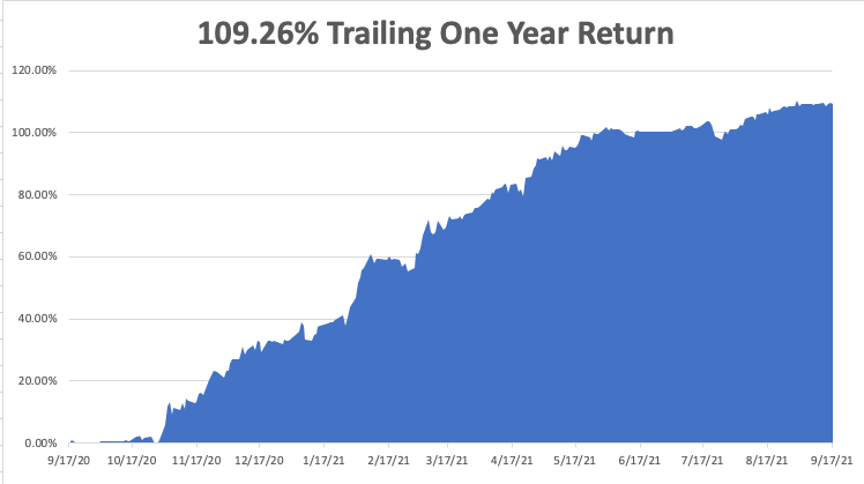
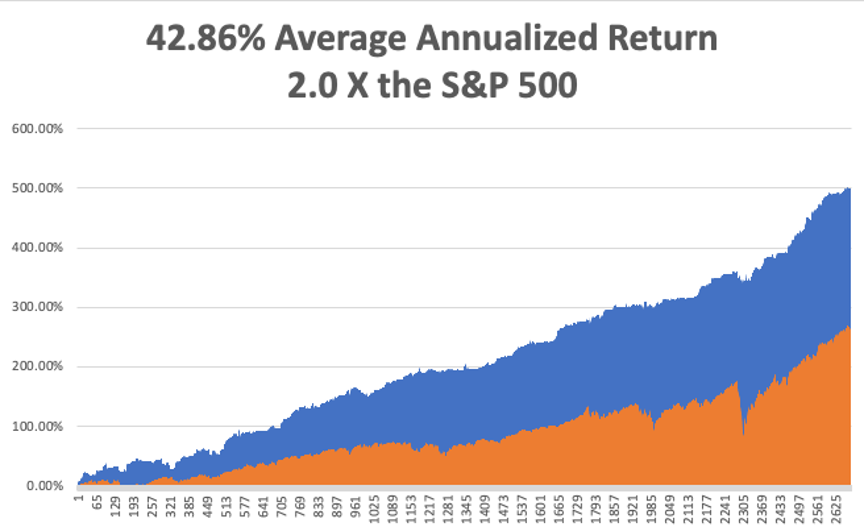
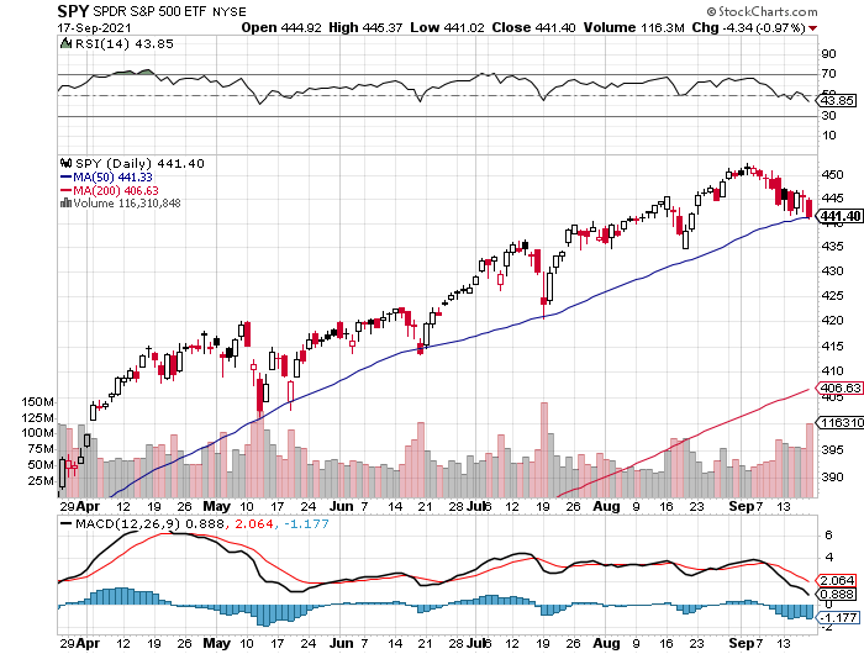
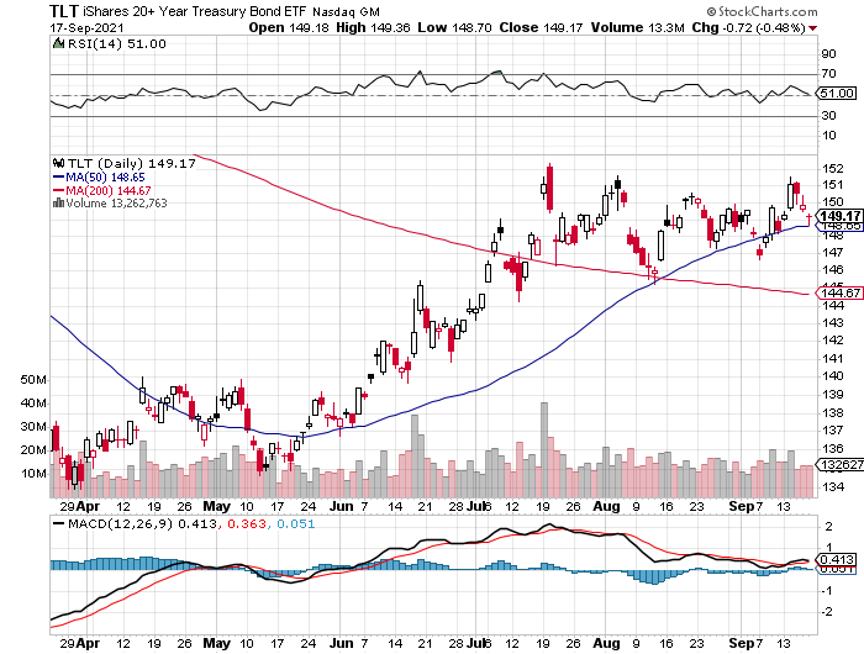
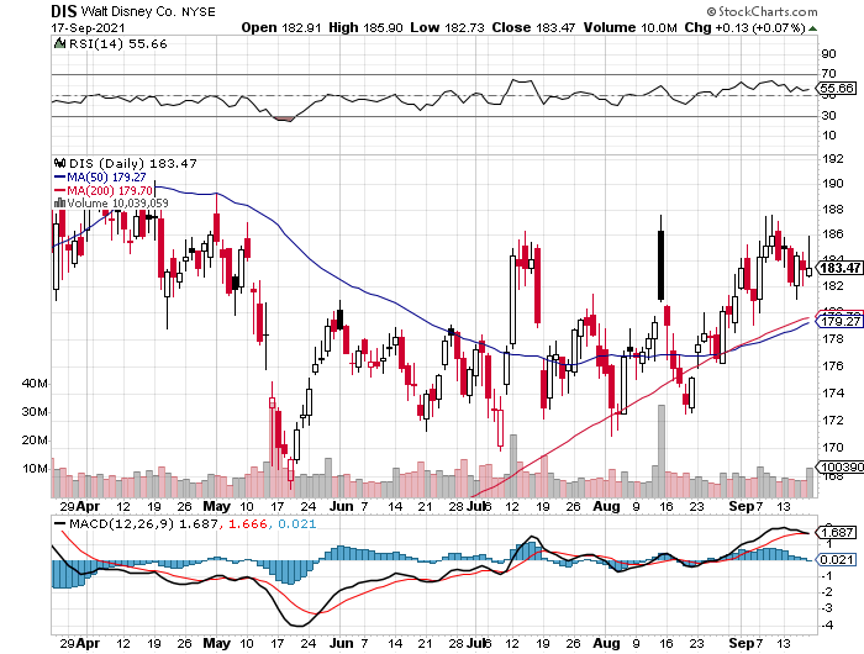
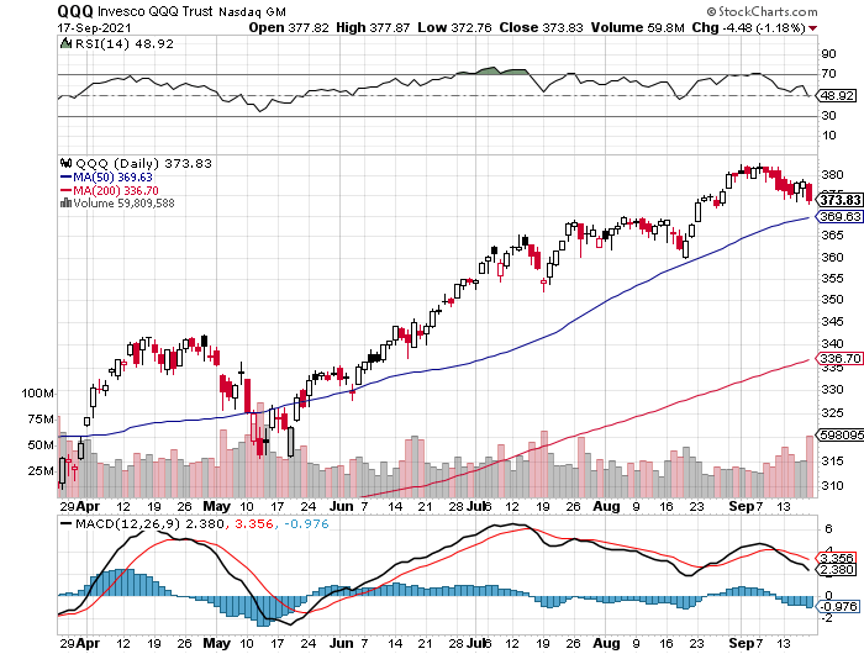
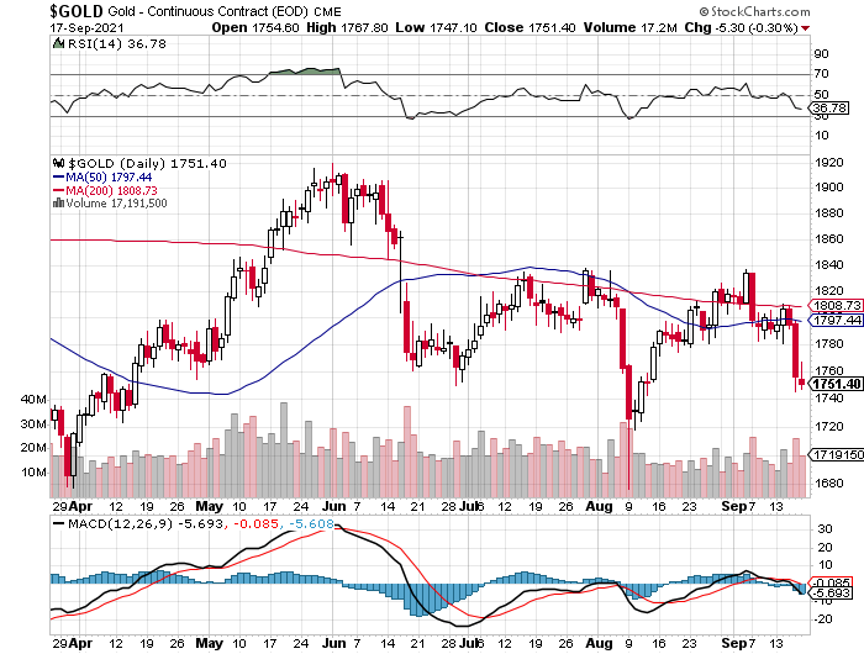
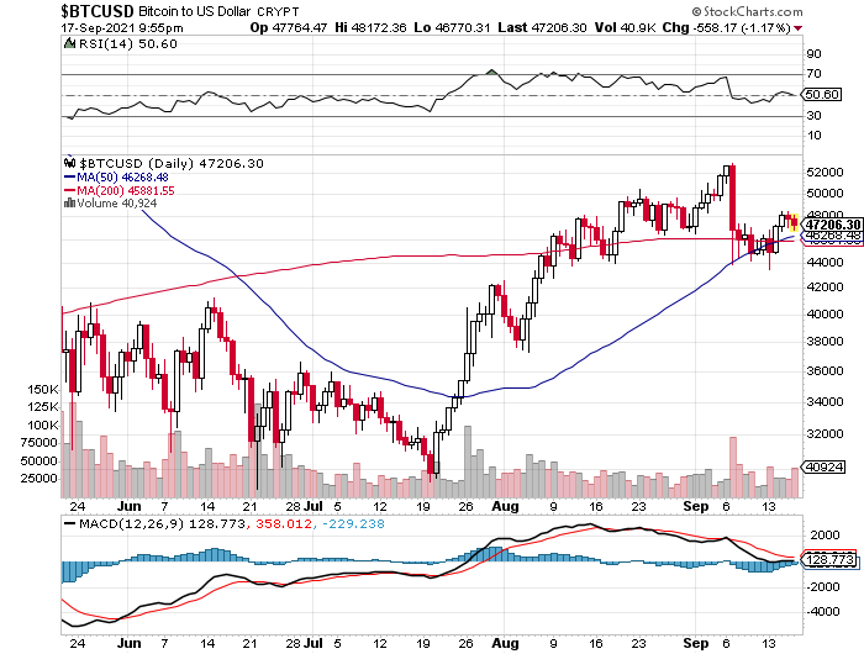
|
Quote of the Day "Risk control is the best route to loss avoidance. Risk avoidance, on the other hand, is likely to lead to return avoidance as well." said Howard Marks, founder of distressed debt giant, Oaktree Capital Management. |
| This is not a solicitation to buy or sell securities The Mad Hedge Fund Trader is not an Investment advisor For full disclosures click here at: http://www.madhedgefundtrader.com/disclosures The "Diary of a Mad Hedge Fund Trader"(TM) and the "Mad Hedge Fund Trader" (TM) are protected by the United States Patent and Trademark Office The "Diary of the Mad Hedge Fund Trader" (C) is protected by the United States Copyright Office Futures trading involves a high degree of risk and may not be suitable for everyone.[FONT="][/FONT] |